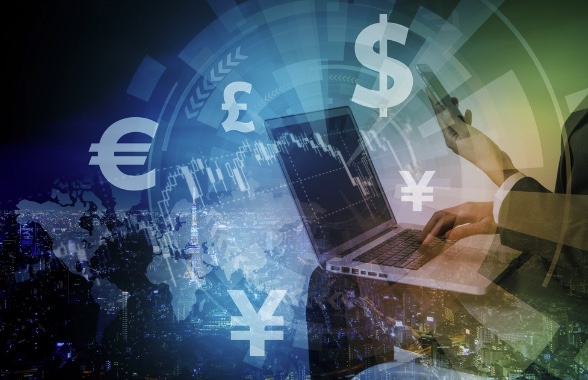Revolutionizing Digital Transactions: Key Payment Trends for 2024

Digital payment options, such as P2P apps and mobile wallets, are modern solutions in the traditional banking industry.
Financial innovations like these improve customer experience and transaction speed, while reducing the cost of multi-layered transactions.
People can purchase, pay, and transfer their money through different platforms easily.
These payment methods have been particularly exceptional in the gambling industry, where punters transact from different locations globally using diverse methods.
Through these new developments, the betting industry is able to offer more payment options, all promising frictionless deliveries.
This means punters can create an account and start betting at high odds using any form of transaction methods.
According to Kate Richardson, an expert tipster who provides betting tips and analysis for punters, whether you prefer mobile payment options such as Google Pay, or your preference is open banking and other latest innovations, the choices are almost limitless.
This article will discuss these payment trends and what makes each special.
Top Digital Payments Trends Shaping the Payments Landscape in 2024
Modern payment trends are creating the possibilities for more advanced solutions in the finance sector in the foreseeable future. These are eight of some of the top trends to watch in 2024:
Account-to-Account (A2A) Payments Soar
A2A has gained popularity in recent years. Statista reported that A2A accounted for 9% of global eCommerce payment transactions in 2022. Traditionally, most transfers usually include intermediaries, like credit card networks or clearing houses, which adds a layer of complexity. It either takes more time or incurs more fees per transaction.
A2A payments simplify this process through direct transfers from one bank account to another, bypassing intermediaries and saving time and money. It adopts financial mechanisms, such as API (Application Programming Interfaces), to create a seamless banking service across different platforms, making it easier for financial institutions to offer A2A capabilities.
Payment Fraud Explodes
Payment fraud is dramatically increasing alongside the use of digital payment methods. Financial technology has been hugely beneficial to the entire finance ecosystem, but the innovation has also made it easy for conmen to have their way.
Con artists are constantly adapting to emerging tech developments in the financial industry. They use sophisticated methods, like synthetic identity fraud, deepfake tech, and advanced phishing attacks, that are more difficult to detect and which often require more advanced security solutions. Since then, financial institutions and payment providers have devised different ways to battle these fraudulent acts.
One of the most effective ways they’ve developed is deploying artificial intelligence-based fraud detection systems. These systems use machine learning to analyze real-time payment transaction patterns and behavior. They identify anomalies that may indicate malicious activities and flag them as unusual actions.
Depending on how they’re set, these systems will either block the transaction automatically or alert a human analyst to investigate further. These systems prevent potential malicious activities, and help analysts understand new hoax tactics as they develop.
Reducing the Cost of Payments Becomes Imperative

The modern financial market is cost-sensitive. If other options exist, businesses and consumers would prefer the economically feasible transaction method to the opposite. The need for lower transaction costs is influencing the evolution of payment technology. FinTechs are creating innovative solutions aimed at minimizing expenses. One of these solutions is blockchain technology.
Blockchain uses a decentralized framework, which reduces the need for financial intermediaries like banks and clearing houses. Blockchain cuts out these middlemen and allows transactions that incur lower fees than conventional methods.
Fact: Blockchain particularly fuels the cryptocurrency market.
These technological innovations also establish access to financial services. When transactions are affordable, more businesses and consumers, especially those in economically disadvantaged regions, can access and benefit from secure and efficient payment systems.
Corporates Drive for Efficiency
Corporate entities are streamlining their payment to enhance operational efficiency and reduce costs. They integrate advanced payment solutions that automate and optimize transactions, from payroll to supplier payments.
These advanced payment systems optimize these processes using artificial intelligence and machine learning technologies. For instance, artificial intelligence can predict the optimal payment timing to maximize cash flow or minimize transaction costs based on past data patterns, and machine learning can improve fraud detection mechanisms.
Banking as a Service (BaaS) Gains Momentum
Banking as a Service (BaaS) has helped banks integrate their services directly into the business models of non-banking entities, including fintech startups, e-commerce giants, and even traditional retailers, through API.
This integration lets them facilitate many financial services made directly through the partner’s interface, like payment processing, lending, and asset management. BaaS is mutually beneficial for both parties.
In an interview, Nigel Verdon, CEO and co-founder of Railsbank, once said, “BaaS is about providing the pipes that help other companies plug into banking functionalities without having to do the heavy lifting themselves.”
BaaS opens new markets and customer segments for banks to offer banking infrastructure and compliance framework to partners who don’t have a banking license. On the other hand, it helps non-banking businesses add financial services to their product and services, boosting customer engagement and creating additional revenue streams.
Real-time payments: Mobile Wallets

Digital wallets let users store multiple payment methods, loyalty programs, and digital currencies in one secure application on their smartphones. In 2012, Peter Olynick, the then Senior Practice lead at NTT Data Services, said, “Within five years, half of today’s smartphone users will be using their phones and mobile wallets as their preferred payment methods.”
With these wallets, users can buy or pay quickly with a tap or scan, especially during checkout, whether online or at physical stores. One way online wallets have become invaluable is their integration of rewards and loyalty programs. Users can earn and redeem points seamlessly, improving their checkout experience and encouraging them to use them repeatedly.
These wallets have global functionality. They integrate with international payment systems, allowing users to make transactions in different currencies and across borders without needing to exchange currencies or carry multiple types of cash.
P2P (Peer-to-Peer) Apps
In 2022, about 56 million people were using P2P apps, like Venmo and Zelle, in the United States alone. These apps have gained massive traction due to their ability to ease digital payments’ use, speed and cost. P2P apps have user-friendly interfaces that make sending money as simple as sending a text.
Fact: Users have found more use for P2P apps beyond transfers— they use them to share bills at social gatherings, split the costs for group gifts, or settle small debts among friends.
These apps have features like transfer personalization, where users can add messages or emojis to each payment, encouraging interaction and making it more engaging.
P2P apps are also vital in the gig economy, where freelancers and contractors must get paid promptly to manage cash flow effectively. These ability of these apps to facilitate immediate payments upon service completion removes the financial uncertainty that can come with traditional payment cycles.
Trends To Watch in 2024 and Beyond
These trends have three things in common: security, convenience, and cost reduction. The payment landscape is intent on reducing cost and facilitating faster payments, which is what methods like the A2A payments and P2P apps do.
BaaS is broadening service access, and Mobile wallets offer global transaction capabilities. These trends are shaping the future of financial transactions and attending to users’ needs.
Spotted something? Got a story? Send a Facebook Message | A direct message on Twitter | Email: [email protected]
Latest News









